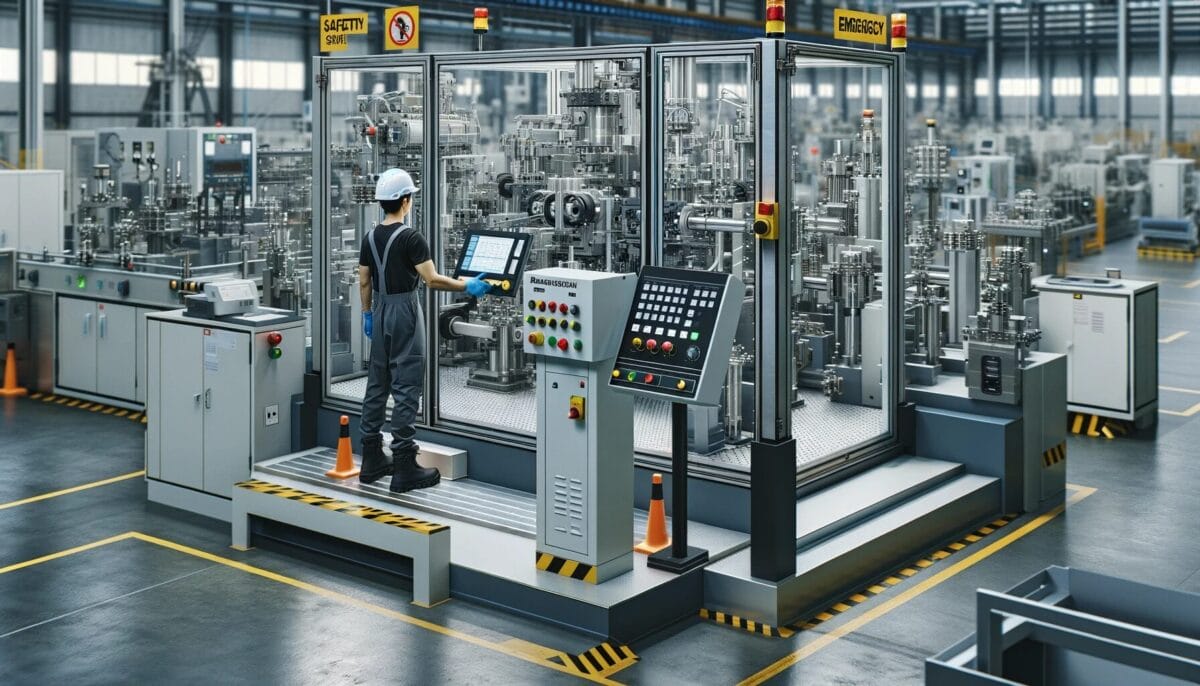Abstract
The objective of this article is to elucidate the significance of adhering to machinery safety standards in industrial settings, with a specific focus on the Australian context. This investigation will delve into the various aspects of machinery safety standards, encompassing the legal framework, operational protocols, and the critical role of these standards in mitigating occupational hazards.
Introduction
In the realm of industrial operations, the safety of machinery and equipment is not merely a matter of compliance but a cardinal element of operational integrity and workforce protection. The concept of Machinery Safety Standards encompasses a broad spectrum of regulations, guidelines, and practices designed to ensure that the operation of machinery in various industrial sectors adheres to stringent safety criteria. This article aims to dissect these standards, underscoring their necessity and the ramifications of non-compliance.
The Legal Framework and Regulatory Bodies
In Australia, the regulatory landscape for machinery safety is governed primarily by the Model Work Health and Safety (WHS) Act, supplemented by standards such as AS 4024.1 – Safety of Machinery. These legislative instruments mandate comprehensive safety measures, risk assessments, and the implementation of control measures. The pivotal role of regulatory bodies such as Safe Work Australia in formulating and enforcing these standards is indispensable in shaping a safe industrial environment.
Risk Assessment and Management
Central to the ethos of machinery safety standards is the principle of risk assessment and management. It necessitates a systematic process where potential hazards associated with machinery operation are identified, evaluated, and mitigated. This process involves a thorough examination of machinery design, operation, maintenance, and the environment in which it operates. The employment of risk assessment models, such as the hierarchy of control, plays a quintessential role in determining the most efficacious strategies to alleviate risks.
Operational Protocols and Training
The adherence to machinery safety standards is inextricably linked to the implementation of robust operational protocols and the provision of comprehensive training to personnel. This encompasses not only the correct operation of machinery but also an understanding of safety features, emergency procedures, and the ability to identify potential hazards. The development of standard operating procedures (SOPs) and regular training sessions are fundamental in cultivating a culture of safety awareness among workers.
Technological Advancements and Safety Innovations
In recent years, technological advancements have significantly bolstered machinery safety standards. Innovations such as automated safety systems, real-time monitoring, and advanced ergonomics have contributed to a marked reduction in machinery-related accidents. The integration of these technologies into machinery design and operation is a testament to the dynamic nature of safety standards, continually evolving in response to new challenges and discoveries.
The Consequences of Non-Compliance
Non-compliance with machinery safety standards can lead to dire consequences. Beyond the immediate physical danger to workers, it can result in legal ramifications, financial losses, and reputational damage to organisations. Case studies from Australian industrial incidents underscore the severe outcomes that can arise from lapses in adhering to these standards.
The Way Forward
To ensure continuous improvement in machinery safety, there is a need for ongoing research, regular updates to standards, and a proactive approach to safety management. Collaboration between industry, regulatory bodies, and safety experts is crucial in developing and disseminating best practices. Furthermore, the adoption of a holistic approach, which considers the interplay between human factors, technological systems, and organisational culture, is essential for the effective implementation of safety standards.
Conclusion
In conclusion, machinery safety standards are not mere regulatory requirements but are pivotal in safeguarding the well-being of workers and the sustainability of industrial operations. The rigorous adherence to these standards is imperative in fostering a safe working environment. As the industrial landscape continues to evolve, so too must the commitment to upholding and advancing these crucial safety measures.
References:
- Safe Work Australia. (2023). Model Work Health and Safety Act.
- Standards Australia. (2023). AS 4024.1 – Safety of Machinery.
- Australian Government. (2023). Work Health and Safety Regulations.
If you would like to know more or would like our assistance in the areas mentioned check us out at www.intrinsicsafety.com.au. Alternately, call us on 1300 990 336 or email us at in**@*****************om.au


